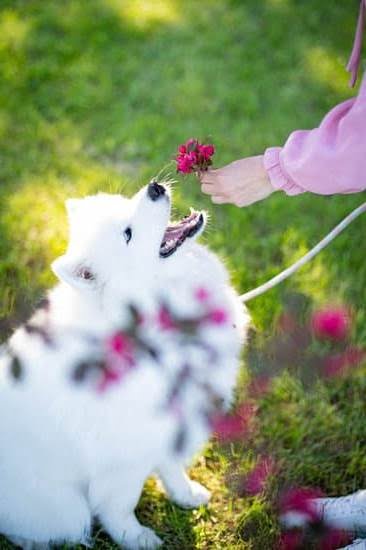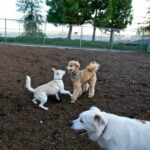Introduction
Training your dog to come to its name is incredibly beneficial, both for you and your pet. When you call your dog by its name, it should always look to you attentively and come running in response. This helps create a stronger bond between you and the dog, as well as reinforces their understanding of when it’s time to pay attention to you. It also makes them easier to handle in potentially stressful situations such as a loud park or busy street because they know that following your instructions is what’s expected of them. Additionally, knowing how to come on command will make training for other commands easier for both the owner and canine alike. The most important benefit by far is that recalls have the potential to save your pet’s life! Dogs get lost or can accidentally wander off even if normally well-behaved, meaning if worse came to worst, having a command such as ‘come’ could be the difference between life and death.
Preparation
Training a dog to come to its name is an important skill to teach them. Most dogs already know their name, but this will help them develop good habits of responding quickly and happily when called.
Before you begin training, there are a few items that you’ll need:
1) High-value treats: Your dog should be provided with tasty high-value treats that they really enjoy and look forward to being given. This could be pieces of cooked chicken, cheese, or even small bits of hotdog.
2) Leash and Collar: A leash and collar will help ensure that your pup stays safe while during the training process. Make sure the collar fits properly so it doesn’t slip off while playing or running around.
3) Clicker Private Room: It’s important to select a private room where you can focus your pup’s attention on learning with minimal distractions from outside sources such as other people or animals. Selecting an area free from clutter is ideal for distraction free training sessions for your pup.
4) Clicker: A clicker is a small device used in dog training which makes different sounds like clicking that can capture the dog’s attention faster than verbal cues alone.
Step 1
The process of teaching a dog to come to its name should begin with the ‘come’ command. This is a general response that dogs learn quickly and can be used in various situations. To establish a positive relationship between the command and the action, use rewards while training. Whenever your dog responds by coming to you when called, provide positive reinforcement with verbal praise or a treat. You can also try using their favorite toy as an additional motivator. Initially, it is important to only give treats and other rewards when they do exactly what you ask, so that they begin to understand the connection between their response and reward.
It is best practice to make sure that your pup hears their name a few times per day without there being any expectation of them responding to it at first. Doing this over time will help your pup become more familiar with the sound of it, making them more likely to respond when you call for them. When your puppy has gotten comfortable with hearing their own name, start adding in short “come” commands after their name so that they associate “come” with their own given name! Use encouraging words like “good boy/girl” each time they come, praising them for completing the task correctly and providing a reward if appropriate. Also make use of body language such as crouching down low and stretching out your arms wide as this may further encourage your dog come towards you for cuddles or praise!
Step 2
When training your dog to come to its name, positive reinforcement is the key. Positive reinforcement focuses on rewarding a behavior that you want your dog to keep doing often. This way, they will know they are getting something good when they obey your command. You can use delicious treats as rewards, praise in the form of verbal acknowledgment, petting and love, or even their favorite toy can be used as incentive. To make sure that they really understand what you’re asking them to do, lavish them with attention and praise each time they correctly come when called right after their name. It’s important to be consistent with rewarding the desired behavior so it eventually becomes a habit. Additionally, if you are too lenient and reward less frequently than desired or forget to reward them altogether sometimes – this can confuse the dog and actually weaken its hold on the skill of coming when called on its name.
Step 3
After your dog has learned to come when you call its name, the next step is to make this behavior automatic. This means that once your dog hears its name spoken, it should immediately start running towards you without hesitation. Here are some tips for creating consistent cues:
1. Use a treat bag or clicker to give your pup a reward when it responds correctly. This will show your pup that coming when called is rewarding and will help reinforce the positive behavior.
2. Have treats readily available in different places around the house where you can easily access them so that you can reward your pup quickly and frequently for responding correctly.
3. Place some of the treats in an accessible place behind you where they’re not visible but audible because dogs often respond to sound better than sight. It will also help them form a habit of running towards you whenever they hear their name.
4. Say your pet’s name with intention so they know that you’re talking to them and expecting something from them. Make sure that the tone of your voice indicates excitement and love- it should be inviting and encouraging! Also, use the same phrase each time you call out your dog’s name so they start associating their name to something positive and exciting!
Common Challenges and Troubleshooting Tips
Training a dog to come when its name is called can be one of the most difficult commands to teach. To make it easier, try breaking down the process into a few steps. First, get your dog’s attention by calling out his name, then giving him a treat or other reward that he will enjoy. Once your pet gets used to expecting a reward after hearing his name, start adding physical commands like sitting or lying down before giving him his treat. The key is to remain consistent and positive while teaching so he learns to associate hearing his name with something good happening.
Common challenges when training a dog to come to its name are lack of attention or focus, too much distraction from other things in the environment, and slow progress for harder-to-train dogs. To troubleshoot these issues, try starting off with short training sessions in an environment with limited distractions until your pup develops better concentration. You can also try adding more rewards and making sure you are being clear and consistent every time. If the problem persists, consider investing in professional help from an animal behaviorist or certified dog trainer who can recommend strategies designed for your particular breed and age group.
Sample Training Plan
Week One: Begin this week by introducing your dog to its name. Have plenty of treats for yourself and your pup. Every time the dog looks at you or gets close to you, refer to it by its name and give it a treat. Make sure that your dog is always paying attention when given its name, so they associate their name with positive stimuli.
Week Two: In addition to referring to your pup by its name, also begin adding verbal cues like “Come” or “Here!” as a way of encouraging them to come over to you when called upon. Be sure to keep praising your pup with words and treats whenever it does this correctly so that your pup begins associating the verbal cue with the action of coming over to them.
Week Three: Once the dog has learned basic commands and responses, practice calling out the dog’s name in various different locations around your home such as a bedroom, kitchen, bathroom etc., calling it from different distances from each room. With each successful response reward them with a treat and lots of praises/compliments. This will help them better recognize their name despite being in different surroundings or not feeling as close as they normally would be when around familiar people/places.
Week Four: Now increase the distance away from where you are standing compared to in previous weeks before calling out the dog’s name – take steps back while still giving the same verbal cues and praising language as before. If they seem confused or don’t react initially try using hand gestures such as pointing or waving at them until they realize what is expected of them and come over!
Conclusion
Training a dog to come to its name is an essential part of becoming a responsible pet owner. It’s also vital for maintaining control in emergencies and everyday situations when your pup is out and about. To train your dog to come to its name, start by making sure that your pup knows its name and begin with short, simple commands like “Come” or “Here.” After some practice, you can add in treats for rewards and distraction-filled locations to really test the command. Don’t forget—positive reinforcement goes a long way! With patience, consistency, and lots of reward-based praise from you, your pup can learn to obey the command no matter where they are in no time! With consistent practice at home and in other locations over weeks or months, both you and your pup should be able to reap the rewards of this important skill. You’ll never have to worry about your pup running off if properly trained!
Resources and Further Reading
Training a dog to come to its name is an important lesson every pup needs. When you are out and about with your pet, this skill can help you keep it safe from harm and prevent them from running off or getting lost. Therefore, it is essential that owners begin training their dogs early on. Opportunity training will enable puppies to really understand the commands. There are several ways to do this:
1) Appetitive Training: Use treats or toys associated with calling the dog’s name as a lure for him/her to come to you. This requires patience, consistency, and repetition until the dog associates his/her name with rewards;
2) Practice Calling in Different Environments: It’s important that puppies learn how to respond no matter where they are or how distracting their environment is;
3) Positive Reinforcement: Offer praise and other rewards when your pup responds positively;
4) Have Patience: Dogs need time to learn commands so give them plenty of patience while they understand the rules;
5) Watch Body Language: Pay attention when the pup may be trying to run away so you can better estimate when he/she may try and run again.
To supplement these techniques, there are many books devoted specifically to teaching dogs to come when called, such as “The Perfect Recall: How To Teach Your Dog To Come When Called” by Terry Ryan. Additionally, podcasts like “Drichard’s K-9 University” offer detailed information on building basic obedience skills for pups. With these resources and a little commitment from both pup and owner alike, even the most stubborn canines can learn this valuable lesson!

Welcome to the blog! I am a professional dog trainer and have been working with dogs for many years. In this blog, I will be discussing various topics related to dog training, including tips, tricks, and advice. I hope you find this information helpful and informative. Thanks for reading!





